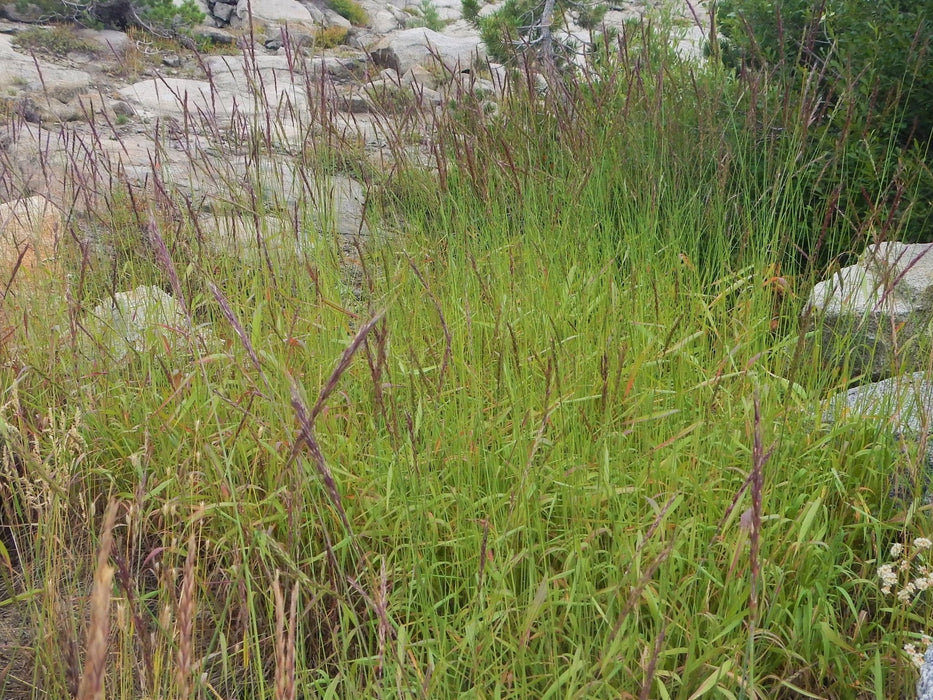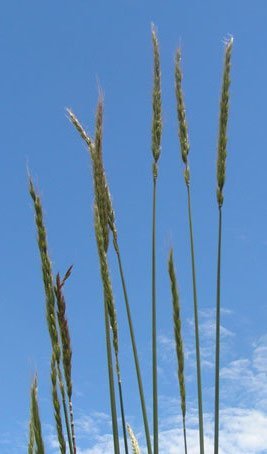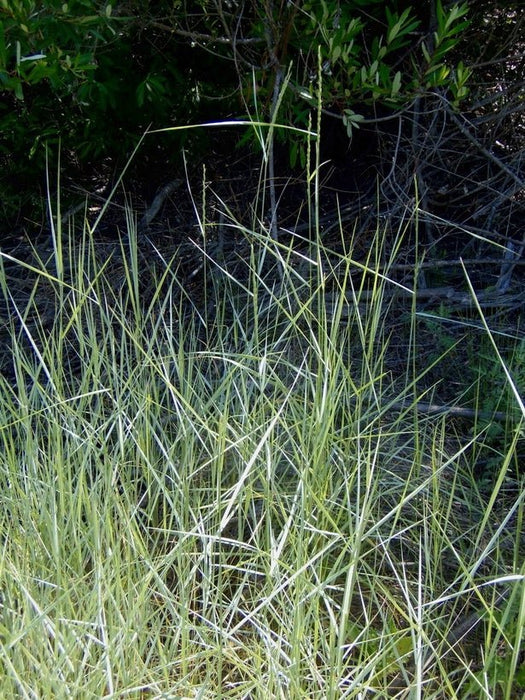
Blue Wild Rye Seeds (Elymus glaucus)
An excellent utilitarian grass for erosion control, wildlife, and agroforestry.
With seedheads that can reach 4 to 5 feet in height, blue wild rye is one of the biggest native grasses in the Northwest. Its wide blue-green blades and thick fibrous root systems can put on a lot of biomass, yet, it usually does not form large single-species monocultures in nature. Rather it tends to pop up in small clumps in open meadows and forest edges among smaller statured species such as tufted hairgrass, California oatgrass, meadow barley, and yarrow.
Blue wild rye does not form extensive rhizomes, but it can spread short distances with stolons and through re-seeding. Mostly it maintains a clumpy growth habit which provides valuable insect nesting and overwintering habitat for species such as lady beetles and ground surface nesting bumble bees. Additionally, the foliage is palatable to livestock and decent for grazing, and is a preferred food source for elk.
We like blue wild rye for its value as an erosion control plant, and its ability to muscle into grasslands, ditches, and forest edges without taking over and crowding out other grasses and wildflowers. It’s also an ideal utilitarian plant for reforestration and agroforestry projects, providing useful shelter for seedling trees and tolerating partial shade as those young trees mature. It likes rich soils, but is tolerant of a wide range of conditions. Typically, no pre-treatment is necessary to get blue wild rye to germinate, however to get great establishment we recommend growing it out in flats, then transplanting it where you want it.
Approximately 500 seeds (15 grams).


